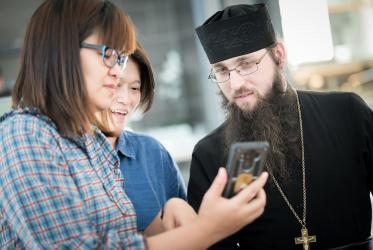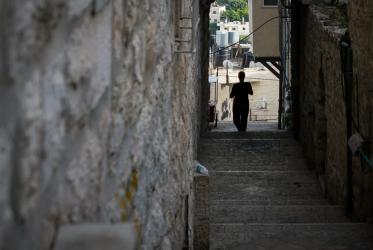In May and June, leading up to the World Council of Churches’ Central Committee meeting in Trondheim, I was on a pilgrimage from Oslo to Trondheim, promoting peace and peaceful co-existence between religious groups in my home country, Norway.
On 18-20 October, I was again at a pilgrimage of justice and peace, this time together with about 50 people, representing councils of churches, specialized agencies and other ecumenical actors, who were gathered in Nairobi, Kenya, for the annual meetings of the South Sudan Ecumenical Network and the Sudan Ecumenical Network.
In his opening prayer, bishop Arkanjelo from the Africa Inland Church reminded us of the hope we as Christians have and how this hope should be manifested: “One day peace will come”. We have to trust God. But while we wait for peace to come, we have to continue to live our lives. People have to be encouraged, because people without hope are dangerous people and no one can live a normal life without hope.
The churches and the Council of Churches in South Sudan (SSCC) have taken huge steps since last year, under the leadership of their general secretary Fr. James Oyet. They talked with enthusiasm about their task, which is to reconstruct the house of South Sudan. In the situation the churches find themselves in today, they have an important role to play. The churches are met with high expectations, both from the people and the government. For me as a Norwegian it is encouraging also to notice that our government, in the state national budget for 2017, has highlighted the importance of the SSCC: The Church is the only institution that is widely trusted and which reaches to the grassroots throughout the whole country and links them to the national and international levels. The Church continues to play a role in peace-building, healing and reconciliation, and has consistently pushed for an end to war and conflict.
The SSCC has put a lot of effort into developing a plan for advocacy. The overall key message is this: “Peace is possible, but it will take time.”
For the first time in many years, the SSCC has the resources to (again) play an important role. A new team has been recruited to work specifically on advocacy, consisting of skilled people committed to the task.
Three advocacy priority areas have been identified:
- Stop the violence - use peaceful means to resolve conflict
- Protect civilians and address urgent humanitarian needs
- Good leadership and governance - an inclusive approach to building the nation
In Sudan, the situation is different in many ways. The churches feel their existence in the country is threatened, as the government will close down churches. The church leaders said that the situation is worse than ever, and that the Sudan Council of Churches is weak. The possibilities for support are limited, and there are only a few partners left in the country.
In this situation, it means a lot to have partners who are willing to listen. In many ways, I felt this was the most important aspect of the work we did with the Sudanese church leaders: We listened, we prayed with and for them, and we assured them that despite the difficult times, we continue to be there, as far as it is possible, trying to encourage them to have the strength and the power to continue to be Church in their context.
Being on a pilgrimage of justice and peace might take different forms. In May and June, I literally walked on my feet. In October, I used my heart and my head to listen and to try to find ways to promote peace and justice in South Sudan and Sudan. Both are parts of the overall goal for the ecumenical movement: To promote life in fellowship and reconciliation, within and among churches, and in the wider human community.




